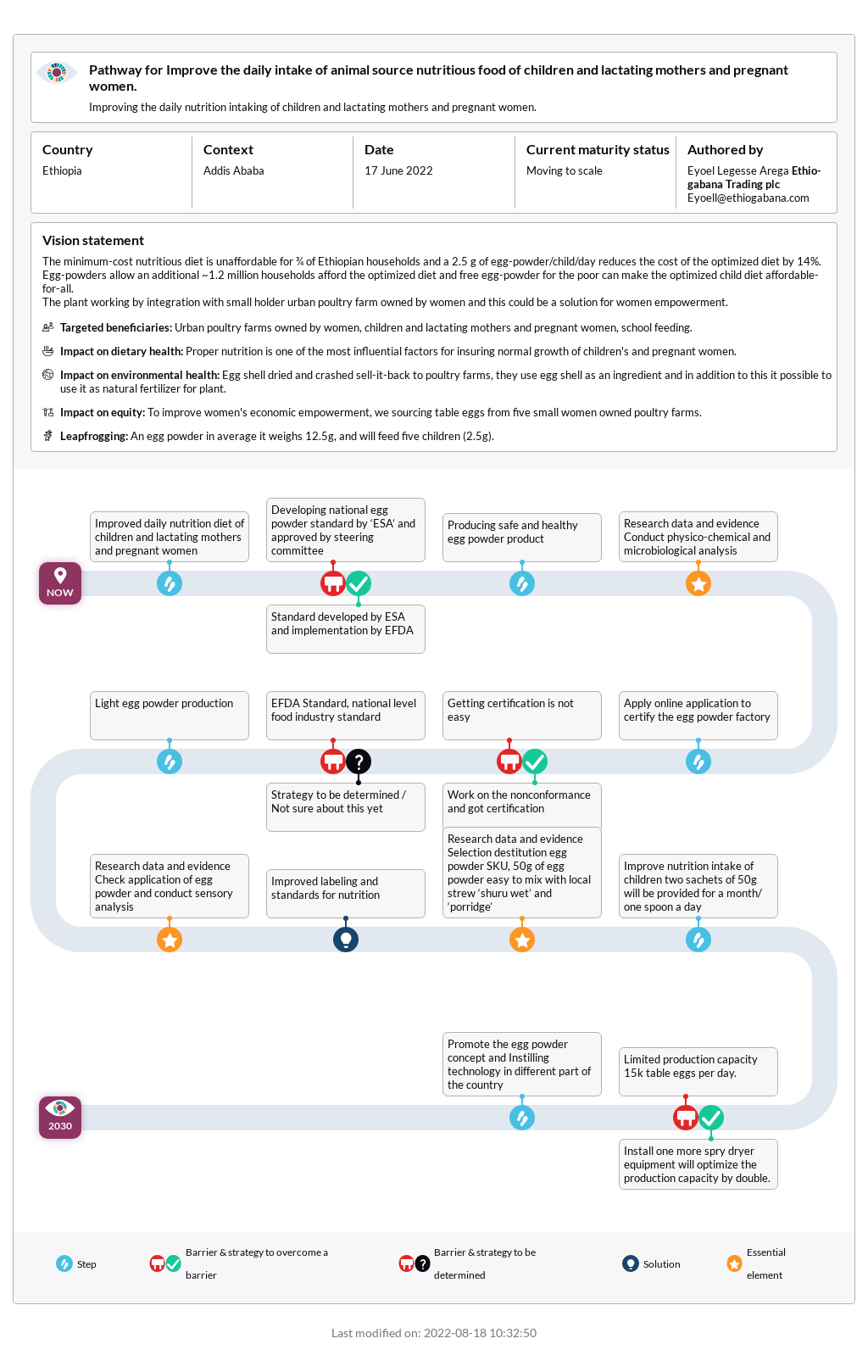
Improving the daily nutrition intaking of children and lactating mothers and pregnant women.
The minimum-cost nutritious diet is unaffordable for ¾ of Ethiopian households and a 2.5 g of egg-powder/child/day reduces the cost of the optimized diet by 14%. Egg-powders allow an additional ~1.2 million households afford the optimized diet and free egg-powder for the poor can make the optimized child diet affordable-for-all. The plant working by integration with small holder urban poultry farm owned by women and this could be a solution for women empowerment.


